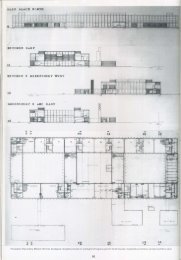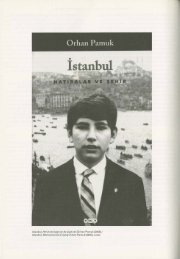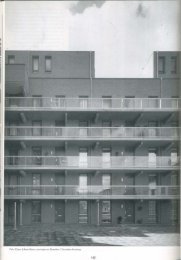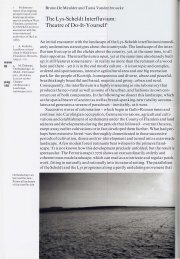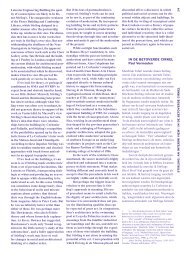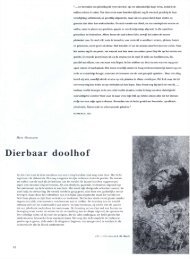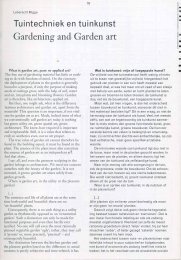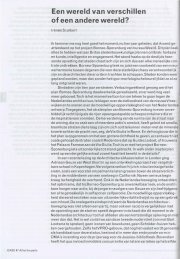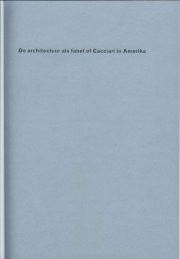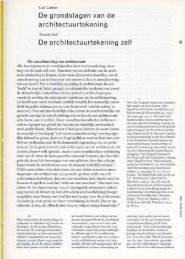Download PDF, 18 pages, 8.62 MB - OASE Journal for Architecture
Download PDF, 18 pages, 8.62 MB - OASE Journal for Architecture
Download PDF, 18 pages, 8.62 MB - OASE Journal for Architecture
Create successful ePaper yourself
Turn your PDF publications into a flip-book with our unique Google optimized e-Paper software.
84<br />
Yet, despite the fact that whole generations of<br />
writers have occupied themselves with the notion<br />
of Paradise since the time of Xenophon and speculated<br />
about the archetypal <strong>for</strong>m and content, this<br />
did not lead to the emergence of an overriding<br />
concept <strong>for</strong> the visual representation of Paradise.<br />
The Garden of Eden as opposite and complementary<br />
to the heavenly Paradise was often considered<br />
only as an abstract spiritual allegory which could<br />
ultimately not be imagined, due to the fact that it<br />
was lost.<br />
Whereas Western art delivers a wide range of<br />
images and figurations of hell intended as ominous<br />
signs <strong>for</strong> the faithful, of the Garden of Eden<br />
in its full extension and meaning only very few<br />
and vague representations seem to have been produced.<br />
One might reflect on this a little further<br />
and consider the reasons <strong>for</strong> this apparent lack of<br />
interest.<br />
Given the proliferation of images by which <strong>for</strong><br />
example the medieval church communicated with<br />
its illiterate congregation, it is surprising that<br />
memorising Paradise was not generally assisted by<br />
the production or design of clear mental images<br />
of the site and its location. Speculation about a<br />
divine nature often took the lead. Nature was the<br />
art of God. The 'ordo divina res in Natura' was<br />
nevertheless continuously challenged. In the following<br />
I will endeavour to examine plausible<br />
iconographies and the topography of Paradise and<br />
Het feit dat hele generaties schrijvers zich sinds de<br />
tijd van Xenofon hebben beziggehouden met het idee<br />
van het paradijs en over de archetypische vorm en<br />
inhoud ervan hebben gespeculeerd, heeft echter niet<br />
geresulteerd in een definitief en overheersend concept<br />
van hoe het paradijs moest worden afgebeeld. De Hof<br />
van Eden als tegenhanger van en aanvulling op het<br />
hemelse paradijs werd vaak slechts als een abstracte<br />
spirituele allegorie beschouwd, iets wat men zich niet<br />
werkelijk kon voorstellen, aangezien het verloren was<br />
gegaan.<br />
Terwijl er in de westerse kunst een breed scala van<br />
gruwelijke beelden en voorstellingen bestaat van de hel,<br />
bedoeld als vreesaanjagende tekenen voor de potentiele<br />
zondaars, schijnt er van de Hof van Eden slechts een<br />
klein aantal vage afbeeldingen gemaakt te zijn. Het is<br />
zinvol hier even bij stil te staan en ons af te vragen wat<br />
de redenen zijn van dit verzuim.<br />
Gezien de veelheid van beelden waarmee bijvoorbeeld<br />
de kerk in de Middeleeuwen met haar analfabete<br />
gemeente communiceerde, is het verbazingwekkend dat<br />
er niet of nauwelijks iets gedaan werd om de mensen<br />
een voorstelling van het paradijs bij te brengen, door een<br />
beeld te geven van waar het lag of hoe het eruitzag.<br />
Meestal werd er vooral gespeculeerd over een goddelijke<br />
natuur. De natuur was de kunst van God. De 'ordo divina<br />
res in natura' (ordening als goddelijk principe in de<br />
natuur) werd echter voortdurend betwist. Dit maakt het<br />
natuurlijk bij uitstek interessant om een aannemelijke<br />
iconografie en topografie voor het paradijs te bedenken<br />
Duitse meester (Rijnland), Paradljstuin, ca. 1420 I German Master (Rhine Area), Pa1adise Garden, c. 1420




